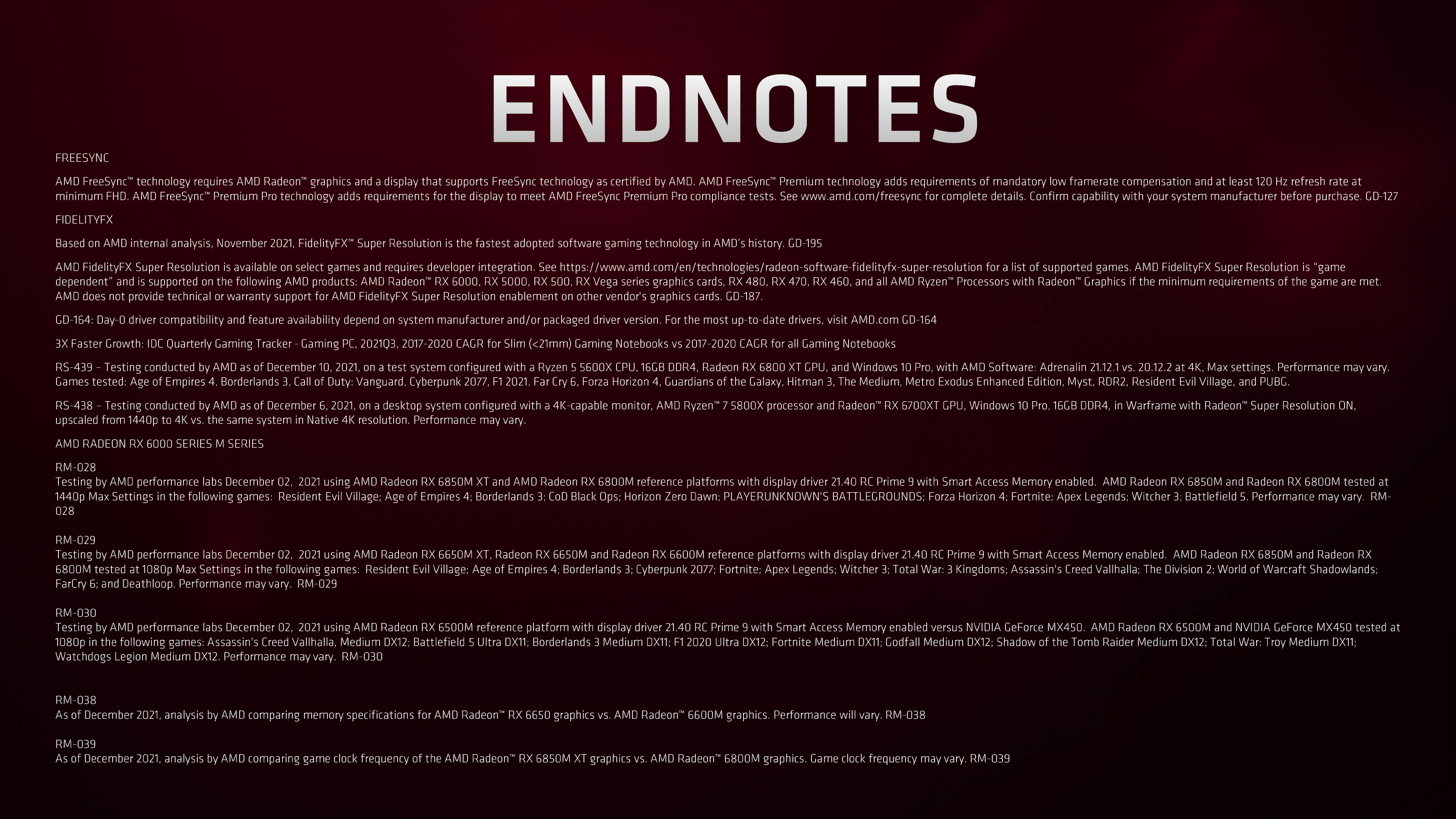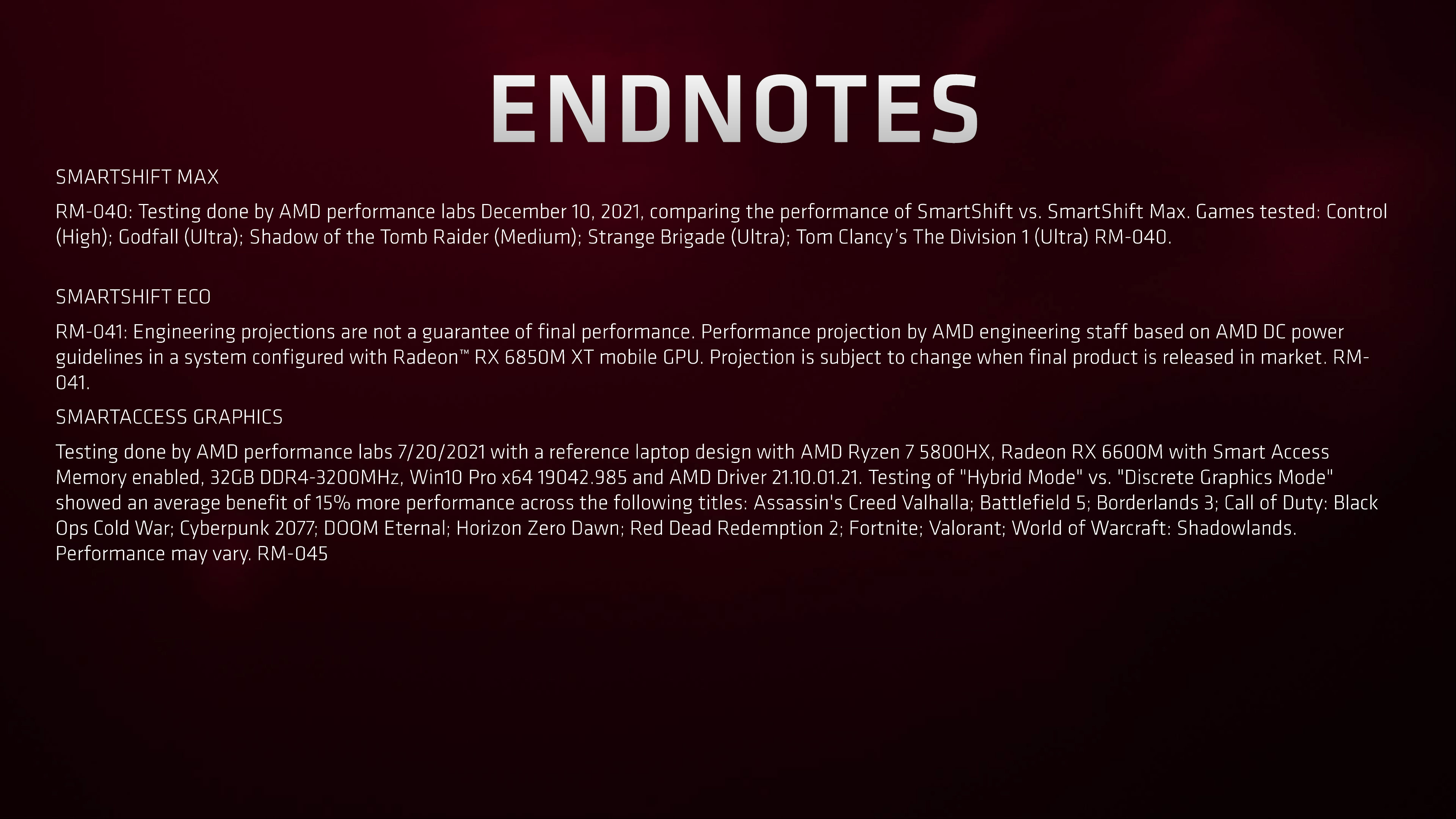AMD Updates Mobile Radeon Lineup With 6nm RX 6000S GPUs
Improved efficiency and slimmer designs
AMD's CES 2022 Product Premiere livestream included a bunch of new announcements, many of which focused on the laptop market. A large portion of the stream focused on laptops, which continues to be one of the fastest growing markets in the PC sector (likely helped by the fact that laptop GPUs are far more available). There was also discussion of the Ryzen 6000 Rembrandt processors with integrated RDNA 2 graphics, Radeon RX 6500 XT and RX 6400 desktop graphics cards, and even a bit of news about Zen 4. We'll focus on the laptops here.
The big news in mobile is that AMD announced a new series of Radeon RX 6000S GPUs for laptops — the "S" is for "slim." These are fabricated on TSMC's N6 node, which is basically the same as N7 but with more EUV layers and refreshed marketing. The extra EUV layers should help with efficiency, and that seems to be precisely what AMD is aiming for. Details are light at the moment, but AMD says the 6000S series will deliver optimized power efficiency and improved performance per watt.




AMD says it’s experienced record growth in the gaming laptop market, though what that means in terms of actual unit sales isn't exactly clear. AMD did announce a host of updated mobile GPUs, hoping to continue that momentum. Besides the slim 6000S chips, AMD also announced new RX 6850M XT, RX 6650M XT, and RX 6650M GPUs that offer improved performance compared to the existing RX 6800M and RX 6600M, along with new RX 6500M and RX 6300M GPUs that are designed to compete with Nvidia's GeForce MX450.
Our understanding is that the RX 6500M and 6300M will use the Navi 24 GPU that also powers the Radeon RX 6500 XT and 6400 desktop graphics cards slated to launch later this month. What's not clear is whether the 6850M XT, 6650M XT, and 6650M are also using the new 6nm variants of AMD's GPUs, or if they're sticking with the existing 7nm designs. It shouldn't matter too much either way, and AMD promises performance improvements of 7% and 20% versus its existing mobile GPUs. Most likely the S-series will be slightly lower performance and lower power variants compared to the M-series.







Along with the new GPUs, AMD also announced some updates to its mobile platforms. Lumped under the AMD Advantage banner, laptops that meet certain requirements promise higher performance and increased battery life. AMD's SmartShift technology has been updated with SmartShift Max, which delivers greater improvements in performance relative to the original SmartShift.
SmartShift dynamically shifts power between the CPU and GPU on supported devices, helping to balance power delivery to provide better performance. There's also a new SmartShift Eco solution for Ryzen processors with integrated Radeon graphics (it's not clear if that will only be RDNA 2 Ryzen 6000 processors, or if it will extend to existing processors), which will lock games to running on the integrated graphics to boost battery life.
The Asus ROG Zephyrus G14 already supported AMD Advantage, and the Alienware M17 R5 will be joining it. There are over 20 laptop designs expected to be part of the AMD Advantage program in the coming year.
With all the new AMD GPUs being announced, for both laptops and desktops, we can only hope that production capacity at TSMC has significantly improved to the point where these products will be more readily available at reasonable prices. There's not much reason to launch a slew of lower priced graphics cards when you can already sell all the high-end GPUs you can make. We'll have to see what retail availability and pricing looks like in the coming months.

































Get Tom's Hardware's best news and in-depth reviews, straight to your inbox.

Jarred Walton is a senior editor at Tom's Hardware focusing on everything GPU. He has been working as a tech journalist since 2004, writing for AnandTech, Maximum PC, and PC Gamer. From the first S3 Virge '3D decelerators' to today's GPUs, Jarred keeps up with all the latest graphics trends and is the one to ask about game performance.